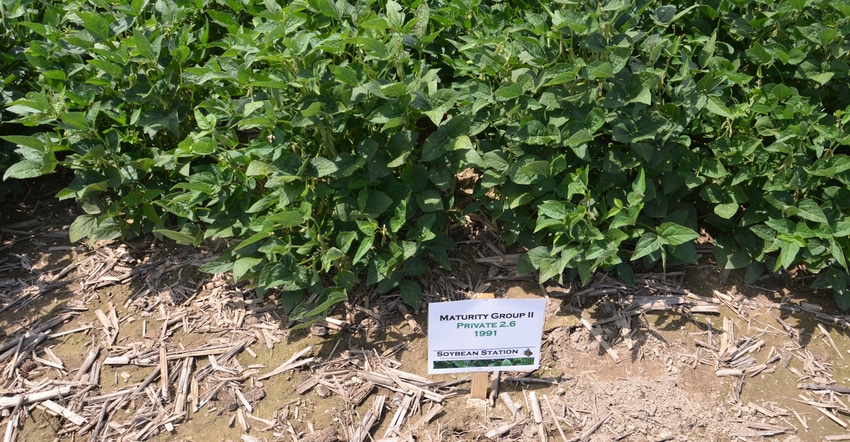
Shaun Casteel likes to tell people that if soybeans are green to the eye by the Fourth of July, they’re setting the stage for a good crop. That’s because they’ve closed the canopy and are harvesting sunlight. He picked up that saying from his grandfather and father.
While that saying still applies today, other conventional wisdom should be adjusted, according to Casteel, Purdue University Extension soybean specialist. Over the past three decades, most people figured the critical period for soybeans was mid- to late August. Late planting in 2019 shifted it a bit later, into September. Now, Casteel believes last year wasn’t a fluke. With today’s modern soybean varieties, the critical period in most years for all but very early soybeans is late August well into September.
“Soybeans move more nutrients into the beans inside the pods later in the season than varieties did in the past,” Casteel told visitors to the American Soybean Association 100th anniversary celebration at the Fouts farm near Camden, Ind. “We have completed research which shows that soybeans are utilizing nitrogen closer to maturity than earlier varieties did.”
Casteel displayed this in graphic form, showing nutrient accumulation versus time in the season for representative varieties from four different eras. The graphs show a shift in how these representative varieties use nutrients and accumulate them inside beans inside pods.

SHIFT IN MAKEUP: Shaun Casteel, Purdue Extension soybean specialist, says today’s soybean varieties continue adding nutrients and dry matter to beans deeper into the season, shifting the critical period for production.

Casteel planted dozens of varieties going back nearly a century at the Fouts farm in 2020 so visitors could follow the progression over time. Walking the plots, visitors noted that varieties tended to get shorter, with less potential for lodging, as their first release date got closer to today.
That’s the part you can see, Casteel explained. The part you can’t see are the shifts plants have made internally in how long they can use nutrients and continue packing in yields if the environment is favorable.
When this season is over, go back and check what conditions were like in late August and September. Was there enough moisture? Were conditions good for filling out beans developing inside pods during that time frame? If they were, yields were likely strong, he said.
While some of the very old varieties looked good at the ASA celebration on Aug. 4, several of them likely fell victim to lodging later. Lodging can hurt yields. They also aren’t wired to continue pumping in nutrients and packing on yield as late into the season as their modern counterparts.
“We will harvest these varieties and check yields,” Casteel noted. “We like to grow them out to maintain seed supply of older varieties. Plus, I’m betting yield results will reflect advancements in genetic improvement over the years.”
About the Author(s)
You May Also Like




